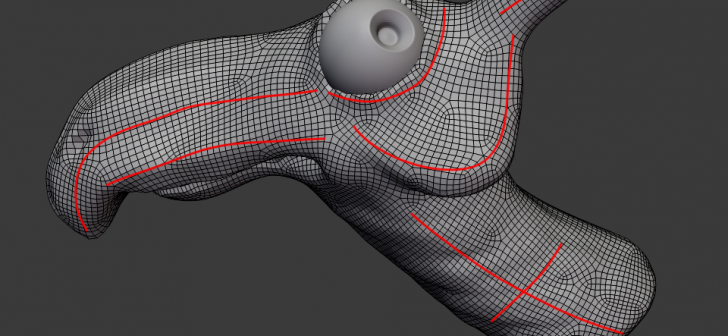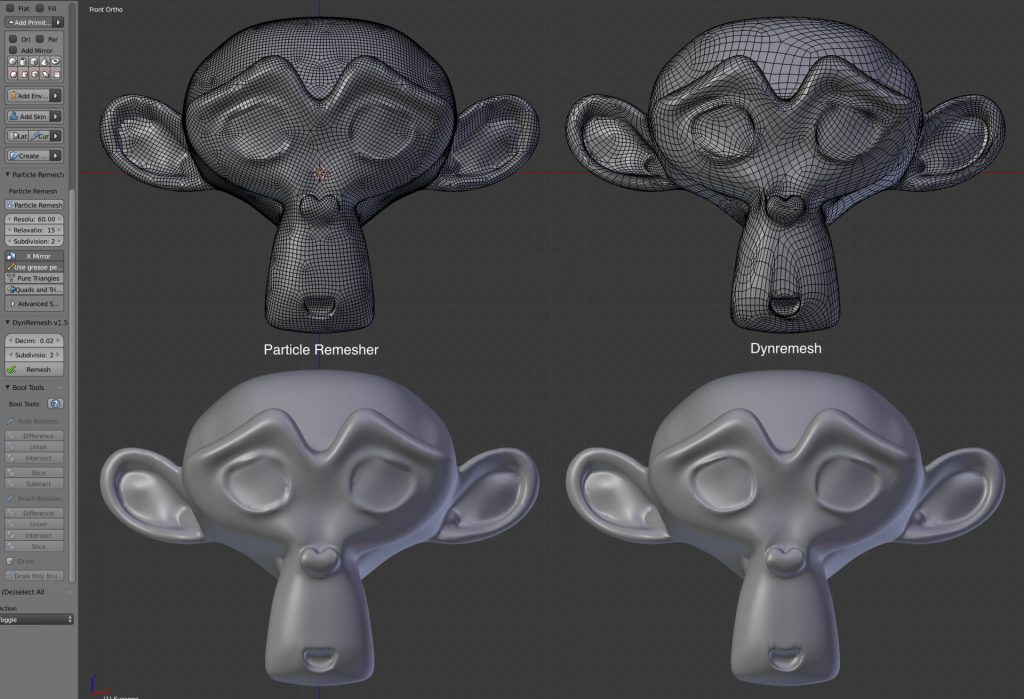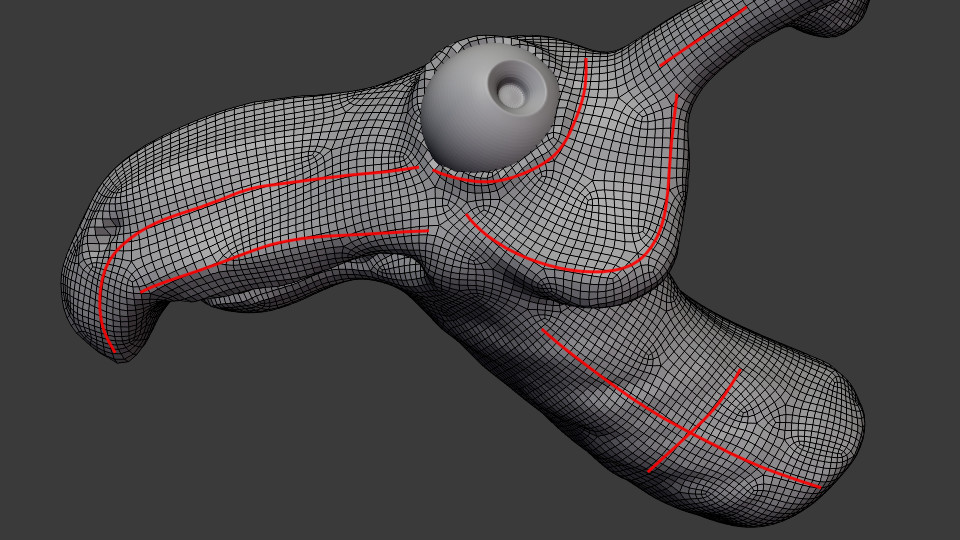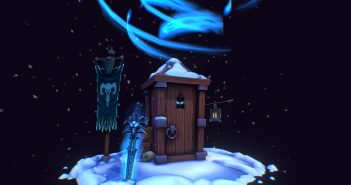Metin Seven wrote a comparative review of two commercial but very affordable auto-retopology add-ons for Blender: DynRemesh and Tesselator, also called Particle Remesh. It's re-published here with his permission, you'll find the original on his website.
Some time ago I wrote this article about automatic polygon retopology tools, comparing the Autopo auto-retopologizer in 3D-Coat to the ZRemesher auto-retopologizer in ZBrush.
As love to use Blender 3D alongside ZBrush, I've been waiting for a decent auto-retopology tool inside Blender for a long time now. Blender does not yet include an automatic quad-retopology function, only a generic, voxel-based quad-poly projection method in the shape of the Remesh modifier, which doesn't orient the polygon flow to the surface features, and usually results in artifacts when the result is subdivided. The Remesh modifier could be compared to the old Remesh All tool in ZBrush, which is generally inferior to what might be called its successor in Zbrush: Dynamesh, and more inferior to the impressive ZRemesher auto-retopology tool in ZBrush.
Recently, two very affordable auto-retopology add-ons have been released for Blender: DynRemesh and Tesselator, also called Particle Remesh. I bought both of them and performed a quick 'n' simple test. Both add-ons are easy to install, and after installation the options are available in Blender's Tool shelf at the left side of the user interface.
For the test I used Blender's Suzanne monkey mascot, but deleted the separate eyes of the model, and closed the eye sockets using the Grid Fill tool in Edit Mode, to form a watertight, manifold mesh for the test. Then I subdivided the mesh a couple of times, to smooth the surface. I didn't change the default settings of both add-ons. I used DynRemesh version 1.5, and Tesselator / Particle Remesh version 1.0.
The screenshot's top row shows the results, while the bottom row has subdivision added to the results.
As you can see, both add-ons result in fully quadrangular topology. If you focus on an even topology distribution, Tesselator / Particle Remesh seems to be the best of the two Blender solutions, with a result that comes close to the Instant Meshes auto-retopology algorithm. Tesselator / Particle Remesh uses its own proprietary, particle-based auto-retopology algorithm, while DynRemesh is essentially an automated combination of native Blender modifiers and tools under the hood.
Both solutions show topology artifacts in different areas after subdivision, if you look at the bottom two versions of Suzanne. This is caused by three topological factors:
- The amount of five-sided, six-sided and sometimes even seven-sided or eight-sided singularities: multi-edge junctions that form a star-shaped knot, sharing the same center vertex. These multi-sided singularities become visible artifacts when subdivided because they interrupt the flow of edge loops / quad-polygon loops.
- The positioning of multi-sided singularities. When placed at strategic surface locations, singularities can become less visible.
- Surface curvature versus edge loop flow / quadrangular polygon loop flow. The more edge loops follow changes in the surface curvature of a mesh, the smoother the subdivided result will be.
Dynremesh shows a rather distorted topology distribution in some areas, but other areas are looking better when subdivided than the Tesselator / Particle Remesh result, such as the surrounding edges of the eye sockets, while Tesselator / Particle Remesh performs better in preserving the shape of the mouth.
In conclusion, these Blender add-ons don't yield the sophisticated results of 3D-Coat Autopo or ZBrush ZRemesher, but those are comparatively expensive commercial tools. In my personal opinion, Tesselator / Particle Remesh is currently the best choice for auto-retopology inside Blender. At the time I write this it has a lower price than DynRemesh, and the current Tesselator / Particle Remesh version 1.0 features more useful additional options than DynRemesh version 1.5, such as being able to use Grease Pencil strokes to guide the auto-retopology process.
- More information about Tesselator / Particle Remesh can be found in this Blender Artists community discussion.
- More info about DynRemesh can be found in this Blender Artists community discussion.
Last but not least, I hope someone will soon release a usable implementation of the Quadriflow algorithm, which is an improved version of the above-mentioned Instant Meshes auto-retopology method.






2 Comments
As an additional comment, the DynRemesh addon is nothing more than a bunch of Blender's native addons gobbled together in a couple lines of code. The developer gave the false illusion of something actually innovative by saying it is a "Anistropic Quad Remesher", and even saying he could develop a version with loops controlled by grease pencil in the future, which he won't be able to do, unless he writes everything from the ground up. Dishonest to say the least.
i like this blender news. thank you for make it.